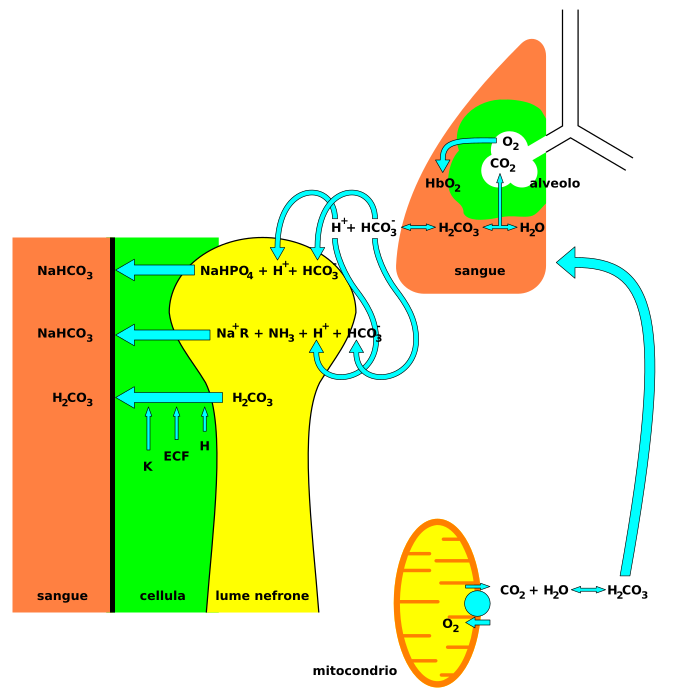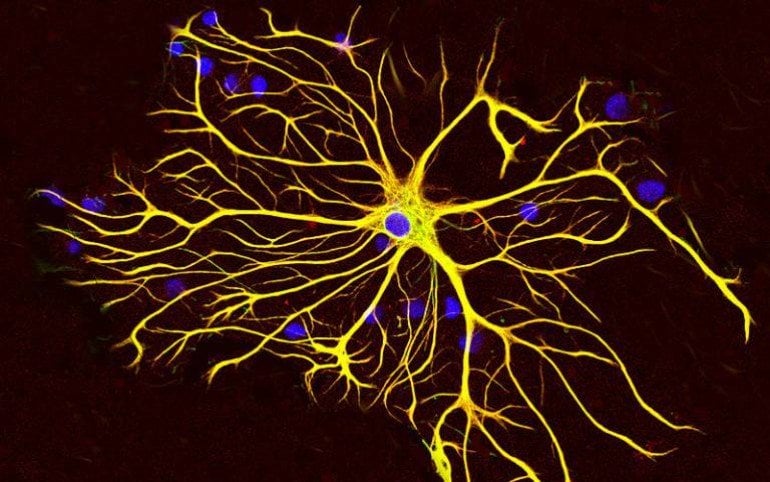Lead author of this study, Dr Shefeeq Theparambil (UCL Neuroscience, Physiology & Pharmacology) said: “The human brain consumes an immense amount of energy, the rate of which is estimated to be equal to human leg muscles running a marathon. Such a high metabolic rate produces a significant amount of acid, but until now, it had not been entirely clear how the brain protects itself from harmful acidification.
Bicarbonate, in conjunction with water, hydrogen ions, and carbon dioxide, forms a buffering system, to provide resistance to pH changes in both the acidic and basic directions. This is especially important for protecting tissues of the central nervous system, where pH changes too far outside of the normal range in either direction could prove disastrous.
 Nervous system involvement may be seen with acidosis. Signs and symptoms that may be seen in acidosis include headaches, confusion, feeling tired, tremors, sleepiness, flapping tremor, and dysfunction of the cerebrum of the brain which may progress to coma if there is no intervention.
Nervous system involvement may be seen with acidosis. Signs and symptoms that may be seen in acidosis include headaches, confusion, feeling tired, tremors, sleepiness, flapping tremor, and dysfunction of the cerebrum of the brain which may progress to coma if there is no intervention.
By studying live mice and brain cell samples, the researchers were able to identify the mechanism by which astrocytes maintain pH balance in active areas of the brain. They found that at least one third of astrocytes in the mouse brain release bicarbonate that counteracts the acidity of the protons released by neuronal cells. The bicarbonate release corresponds to local activity levels in the brain, as the mechanism continually responds to changes in brain activity in order to maintain balance and support the activity of nerve cells processing information.
Little is known about the mechanisms that maintain local carbon dioxide/bicarbonate buffer strength in the extracellular space of the brain. Indeed, the brain extracellular space occupies only ~20% of the tissue volume, and the efficacy of the carbon dioxide/bicarbonate buffering system would rapidly decline if bicarbonate is depleted in conditions of significant extracellular acid loads, such as during periods of increased neuronal activity.
Therefore maintaining stability of brain tissue pH necessitates an effective mechanism capable of supplying bicarbonate to the extracellular space in a responsive mode, i.e., in a neuronal activity-dependent manner.
Among different candidate mechanisms, astrocytes appear to be well suited to provide active control of local brain extracellular pH microenvironment. A single astrocyte occupies a large volume of brain parenchyma with an extensive arborisation covering thousands of individual synapses.

Astrocytes monitor local brain activity by sensing neuronal signalling molecules (such as glutamate and ATP) that escape from the synaptic cleft.
Sodium bicarbonate cotransporters (NBCs) mediate the coupled movement of sodium and bicarbonate ions across the plasma membrane of many cells. In brain, NBCe1 is predominantly expressed by astrocytes.
The scientists hypothesised that, in astrocytes, the recruitment of one (or several) of these intracellular mechanisms in response to neuronal signalling molecules can stimulate outward activity of NBCe1 and thus supply bicarbonate to the extracellular space ‘on demand’, and in accord with the level of local neuronal activity.
To test this hypothesis, the researchers examined the effects of purinoceptor activation on bicarbonate transport and intracellular pH (pHi) regulation in astrocytes, investigated the cellular mechanisms of bicarbonate release, and determined the effect of NBCe1 deletion in astrocytes on brain pH regulation.
The results obtained in this study suggest that bicarbonate transport in astrocytes of the forebrain is controlled by purinergic signalling. ATP and downstream purines facilitate bicarbonate release by astrocytes via activation of NBCe1. This astroglial mechanism appears to play an important role in the control of local brain extracellular pH.

